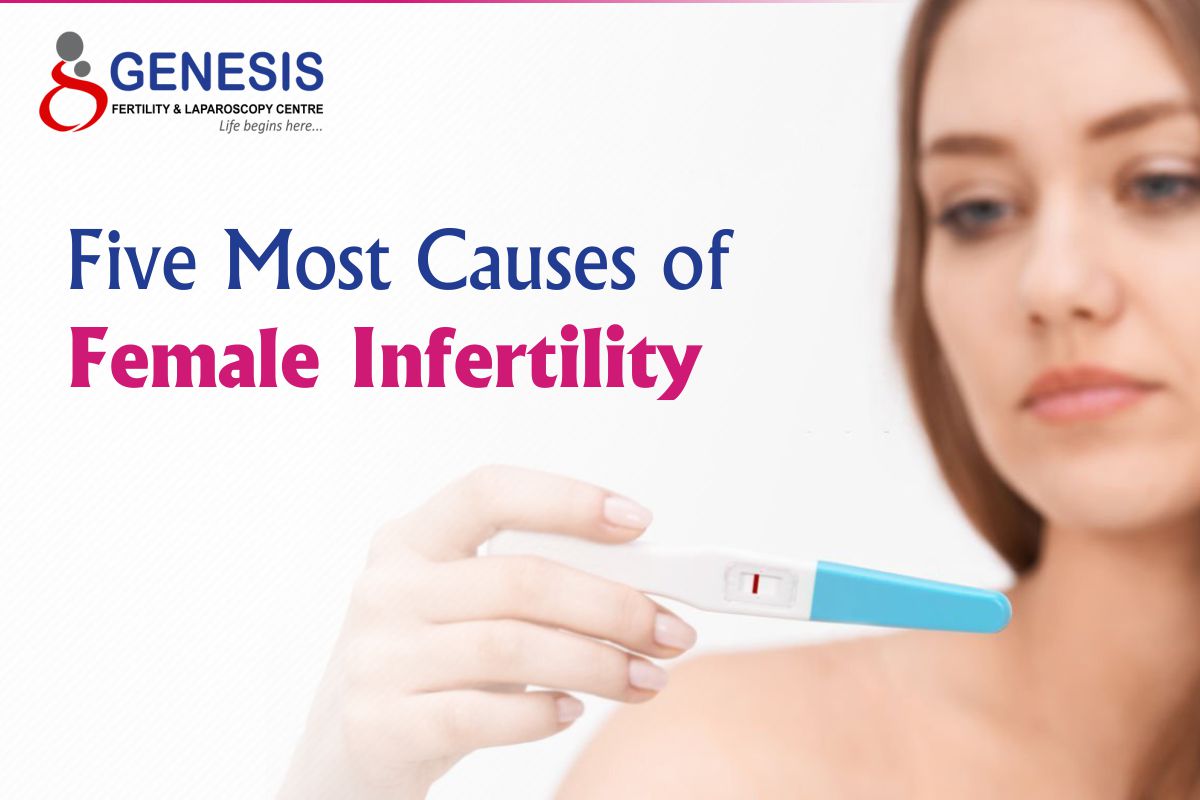Five Most Causes of Female Infertility
Mr TJ returned after 3 months, along with wife Mrs TJ, a 32-year-old entrepreneur. He mentioned that he stopped steroids for bulking up muscles. He also mentioned that he is following the 10 tips given during last consultation. Couple are here to enquire and investigate Mrs TJ too.
This is not a common situation at Genesis. Most often couple come together during first consultation, male partner joins during the second consultation at the most.
I checked Mr TJ, who is healthy, has occasional irregular cycles, some pain during periods and is tad bit overweight, she says she gained few kilos only in last 6 months
Couple enquired possible reasons. I explained that female infertility has additional dimension in comparison with male. Female Infertility is not only failure to conceive but also inability to complete the pregnancy to term. In one-third of the couples, females contribute to infertility.
I discussed five most common causes of infertility in women:
1. PCOS – Polycystic Ovary Syndrome is a hormone imbalance disorder that leads to irregular periods and no ovulation in some women. This is one of the common causes of infertility. Almost 20-25% of in younger women present with PCOS. Women with PCOS present with irregular cycles, obesity, acne, excess facial hair, high androgen (male hormone ) levels leading to no ovulation. There are also numerous small cysts noted in the ovaries.
2. Endometriosis – Endometriosis is a condition where inner lining of the uterus (endometrium) grows elsewhere in the body, most often in uterus(Adenomyosis), ovaries (chocolate cysts), and the pelvis. Women with endometriosis experience period pains, pain during sexual intercourse and heavy periods. In certain cases, endometriosis damages the ovaries and prevents ovulation. It may even hinder the egg’s journey into
the uterus via the fallopian tubes by obscuring their free movement to pick the egg during ovulation and passing it into the uterus. There have been cases where endometriosis has affected the muscle of the uterus (adenomyosis) and thus creating difficulties in the implantation of a fertilised egg.
3. Sexually Transmitted Infections (STIs) – An STI such as chlamydia or gonorrhoea lead to pelvic inflammatory disease (PID). PID refers inflammation and infection in the pelvic region. In most cases, women with PID either have no or vague symptoms. This leads to difficulty as well as delay in the diagnosis and thus treatment. PID leads to internal damage and block in the fallopian tubes and this damage is permanent, blocking the path of the egg into the uterus. If a fertilised egg gets blocked in the fallopian tube, it canresult in ectopic pregnancy, This is a life-threatening situation which requires immediate surgery. PID increases risk of ectopic from 3 to 15%. Previous ectopic increases risk of next ectopic to up to 50%.
4. Ageing – This is undoubtedly increasingly common cause affecting a woman’s fertility. A woman’s fertility begins to decline once she enters her 30s. It is a known fact that by the time a woman completes 35 years of her age, her fertility reduces by roughly 40% and it declines further by the time she turns 40 to almost nil. This happens due to falling count in the eggs and their quality
5. Weight – Women who are underweight or overweight are at a high probability of infertility due to irregular periods and no ovulation. Women who are underweight with low percentage of body fat (athletes) often have irregular periods and issues with ovulation. Being overweight is also known to hamper the regular menstrual cycle and ovulation process in women. Overweight women have higher chances of miscarriage and other complications during pregnancy such as diabetes and hypertension. Most infertility treatment programs like IVF also have a poor success rate for obese and/or overweight
women. Majority of the overweight women can improve their success rate just by shedding those extra kilos!
Apart from the above-mentioned, female fertility can also be impaired by smoking, alcohol, fibroids, low ovarian reserve, autoimmune disorders etc.

